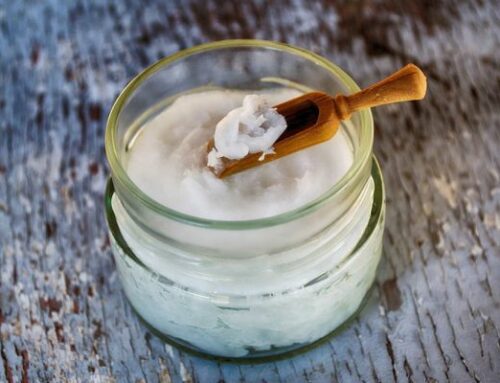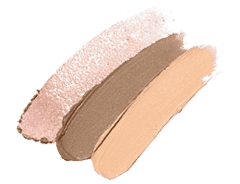When it comes to beauty, no one can deny that clean is the new normal. Don’t believe it? Just ask most women who rely on these products every day to maintain their beauty and skin health. While the vast majority of consumers abide by the philosophies of green chemistry and clean beauty, we are still anxious to dispel some commonly held misconceptions about natural cosmetics, more so for those who are on the fence about making the switch. In doing so, we hope to bring more people into the fold for practicing this lifestyle. As a provider of raw cosmetic materials, Phoenix Chemical will always educate our consumers on what’s in the best interest for their health. In today’s post, let’s talk about debunking some common clean beauty myths about natural cosmetics.
Clean Beauty Myths: First Defining Clean Beauty
The clean beauty movement goes so much deeper than what celebrities want you to believe about its efficacy. The industry itself commenced through organizations like the Environmental Working Group and the Campaign for Safe Cosmetics, respectively. These organizations were frustrated with the FDA and its lack of regulation over the cosmetics and personal care industry. Back in 1938, the FDA passed the Federal Food, Drug, and Cosmetic Act. In 1966, the Fair Packaging and Labeling Act. Neither regulate many of the ingredients used in our beauty products today. In response to the lack of external regulation, these organizations started conducting their own checks on beauty ingredients.
Brands caught on and started following suit, and the clean beauty industry as we know it today, started to come into fruition. The problem lies with the lack of clear guidance from the FDA. Some things have been twisted to the advantage of some brands in the beauty industry. Terms like natural and clean aren’t regulated, which has led brands to come up with their own definition of clean beauty.
4 Clean Beauty Myths Debunked
As stated in the previous section, the waters around the term “clean beauty” tend to be muddy-which is why brands are defining their own terms for this philosophy. Cleanwashing, greenwashing, and a lack of regulation and clear guidance can lead to a lot of disarray amongst consumers. To help you figure out which raw cosmetic materials line up with your wants and values, here are 4 common misconceptions about natural cosmetics, debunked.
1 – Clean Beauty Will Always Be Vegan
While there is often a confluence between clean beauty and vegan beauty, the two terms should not be conflated as the same thing. Simply put, vegan beauty products use zero animal products. That means you will not find ingredients like beeswax, cochineal, and collagen on the back of a vegan-labeled product. Alternatively, you can still find this in clean beauty. Take collagen, as an example. Collagen comes from the connective tissues of animals, so definitionally, it is not vegan. However, many brands that define themselves as clean, still sell it. Often giving it the nod for boosting skin health. Conversely, other brands that identify as vegan-friendly, sell products that some clean beauty brands wouldn’t. Some vegan products like shampoos for example, will contain SLS.
2 – Clean Beauty Is Always Cruelty-Free
Yet another thing that tends to overlap, the terms cruelty-free, vegan, and clean, couldn’t be any more different. Cruelty-free means that the product has not been tested on animals. To meet these criteria, companies must not allow their products to be tested on animals at any stage in manufacturing. None of the finished products can be tested on animals, and they must not conduct business with other companies that use animal tests. Both Leaping Bunny and PETA both certify products as cruelty-free.
3 – Clean Beauty Is Always Good For The Planet
Don’t get us wrong here. Eliminating toxic ingredients from beauty products is obviously beneficial for the planet. However, when harmful chemicals are washed down the drain, this can leave lasting damage to underwater ecosystems. This does not necessarily mean that all clean beauty products are always 100% sustainable. Case and point-Bakuchiol. Bakuchiol is found on the leaves of the Psoralea corylifolia plant, and is hailed as a pure, natural, clean ingredient in the beauty industry. But the plant itself is actually endangered, having a lower germination rate.
Researchers are growing concerned about the lack of sustainability of its continued harvest. The reality is, sourcing natural ingredients will always come with some kind of environmental impact. Additionally, packaging is another vital component of sustainability. Every year, beauty brands produce about 77 billion units of plastic, and 70% ends up in landfills. On that note, it is important to look for brands that use biodegradable packaging or have zero-waste initiatives.
4 – Clean Beauty Products Always Use Natural Ingredients
Even though both natural beauty and clean beauty are used interchangeably, clean beauty does not need to exclusively use natural ingredients. The Good Face Project, who is responsible for grading ingredients based on their safety, effectiveness, and cosmetic benefits, notes that as long as man-made ingredients are safe and non-toxic, there is no reason why they should be excluded from clean beauty products. Clean beauty is synonymous with non-toxic beauty. As long as certain synthetic ingredients are non-toxic and proven to not cause harm, they can be incorporated into clean beauty products.
Cosmetic Raw Materials with Phoenix Chemical
We hope that debunking these clean beauty myths has helped improve your understanding of cosmetic products and ingredients and how companies choose to utilize them. Overall, the clean beauty movement is a positive movement and there are many great products that have come out of it. Like with any market, partnering with the right companies for your product needs is crucial to achieving the outcomes you desire. Phoenix Chemical is here to help.
Should you have any specific questions that you cannot decipher on your own, visit our site or contact us directly to learn even more about raw cosmetic materials.







